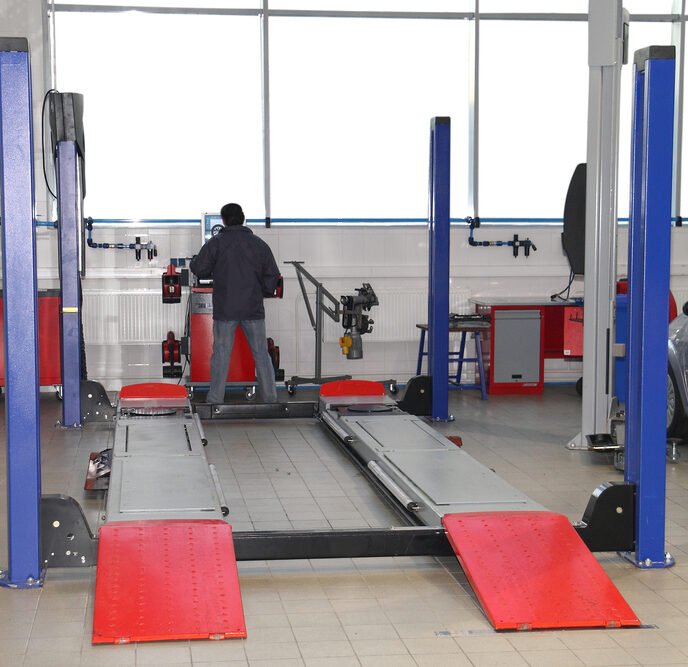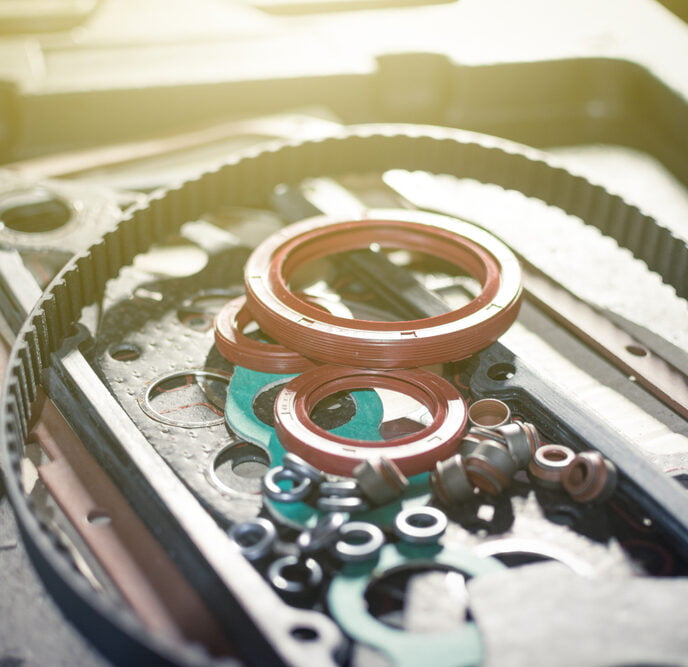Avoid Costly Mistakes: The Importance of Ensuring Proper Usage of Your Vehicle Lifts
Automotive lifts are an essential piece of equipment for both car enthusiasts working from their garage and commercial shops. Safety and proper usage are also imperative in both cases.
Improper usage can result in damage to vehicles or – far worse – serious injury to technicians. The Automotive Lift Institute insightfully wrote, “The prospect of a falling vehicle is much too heavy to take lightly. Lack of training, operator error, being in a hurry, and neglected maintenance will cause lift-related accidents. Lift accidents result in serious consequences.”
In the content below, we discuss the first step to proper lift usage: choosing the correct lift for your desired applications. Then, we’ll list a few important safety tips to keep in mind when operating lifts. Our goal is to provide a helpful guide to avoid lift injury that could have been prevented.
Choose the Proper Lift
Safety begins with choosing the proper lift for your desired applications. Which vehicles will you work on? Are you maintaining motorcycles or semis? Choosing the ideal car hoist for your needs is an essential aspect to ensuring proper usage. Though not a comprehensive list, below are a few of the many different variations of available vehicle lifts:
- Two-Post Lifts
- Four-Post Lifts (for cars or trucks)
- In-Ground Lifts
- Car Parking Lifts
- Portable Lifts
- Air Powered Lifts
Two-Post Lifts:
Certain two-post lifts are powered by hydraulic cylinders, eliminating the need for chains and cables. Hydraulic-powered cylinders can be cost-effective, saving on repairs and heightening safety. Two-post lifts hoist up to around 18,000 lbs., excellent for cars and light trucks. Symmetrical two-post lift models center vehicles, ideal for asymmetrical cars and trucks.
Four-Post Lifts:
Four-post lifts are extremely heavy-duty. These lifts are capable of hoisting cars and lighter trucks; however, they are perfect for lifting large, heavy trucks.
Scissor lifts, unintended for long-term storage, offer a great deal of space around the vehicle under maintenance, regardless of the make or model.
Alignment lifts fall under four-post and scissor lifts. Alignment lifts are perfect for performing wheel alignments, due to radius turn-plates along the front of the lift and floating slip plates along the back.
In-Ground Lifts:
In-ground lifts are commonly seen in quick stop shops. These lifts are un-invasive, low profile, with powerful lifting capabilities of around 8,000 on up to 100,000 plus lbs. In-ground lifts are usually affordable and possess great quality. Perfect for quick jobs in a fast-paced environment, in-ground lifts are a great option for a variety of applications.
Parking Lifts:
Parking lifts are, of course, for vehicle storage. Parking lifts must be durable, secure, high-quality, and trustworthy – able to withstand the weight of a full-sized vehicle for an extended period of time.
Specialty Lifts:
Specialty lifts are important for a wide variety of applications; however, they don’t seamlessly fit into any of the categories listed above.
Heavy-Duty Truck lifts possess extraordinary quality and durability, with secure locking systems. Many heavy-duty truck lifts can hoist trucks over 70,000 lbs.
Utility Vehicle lifts are self-explanatory. These smaller lifts are ideal for ATV repair, turf equipment maintenance, and other small-vehicle applications.
Motorcycle Lifts are small, portable, convenient, and ideal for motorcycles of all sizes.
Safety During Vehicle Hoist Operation
Once your ideal vehicle hoist has been selected, take measures to ensure proper, safe usage. The Automotive Lift Institute (ALI) suggests 11 vehicle hoist safety precautions:
- Daily, inspect the entire lift, making any necessary repairs with original equipment parts. Never operate a broken or damaged lift.
- Don’t block open or override lift controls. Controls are meant to close when released.
- Don’t load the lift beyond the manufacturer’s officially stated capacity. Double-check the rated capacity on the plate attached to the lift.
- Only trained, authorized personnel should position and operate the lift.
- Never lift a vehicle with individuals inside; all bystanders should leave the lift area.
- Keep vehicle hoist area clean and free of debris, grease, oil, and trash.
- Don’t run over lift arms, adapters, or axle supports with a vehicle. This can damage the vehicle, the lift, or both.
- Load vehicle carefully. Position lift supports to contact at the vehicle manufacturer’s recommended lifting points. Lift vehicle to desired height after checking that supports are secure.
- Removing or installing components in some vehicles results in a shift in the center of gravity. This will result in instability in the raised vehicle. Always be familiar with the vehicle manufacturer’s service manual for ideal component-removal procedure.
- Remove tool trays, stands, etc. from underneath the vehicle before lowering the lift. Also release locking devices before lowering.
- Provide an unobstructed exit before removing vehicle from lift. Once again, if the vehicle comes in contact with the lift arms, adapters, or axle supports, the vehicle or lift could suffer damage.
The ALI offers further insight into lift safety, stating that owners and technicians are equally responsible for lift safety. “Owners,” ALI wrote, “must provide technicians with proper training before authorizing them to operate lifting equipment. If the owner does not feel comfortable delivering the training the lift manufacturer or lift service company may be employed. If a facility uses more than one type of lift, separate training must be delivered for each type. Technicians must know the maximum weight capacities, how the controls operate, proper vehicle spotting methods, lift safety features, rules for safe lifting, and good housekeeping procedures.”
On the other hand, technicians must be constantly aware of hazards present during lift operations. As mentioned in the introduction, many accidents can be prevented with careful, safety measures. Being hypervigilant, wearing protective equipment, taking necessary precautions when vehicle is hoisted, and being aware of other technicians are all important steps vehicle-lift operators must consider during operation.
SVI International, Inc
Maintaining the integrity of existing lifts is a crucial component to proper usage. SVI International, Inc is the leader in repair parts for automotive equipment, with over 40,000 repair parts for numerous lifts.
Never operate a damaged lift. If you are in need of repair parts or complete new lifts, explore our extensive inventory – or talk to us for insight into the correct option to choose. We’re always a phone call away. Please call us at (800) 321-8173 or complete our online contact form.


